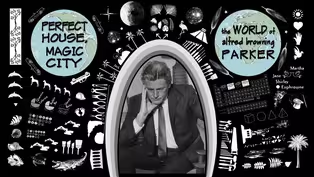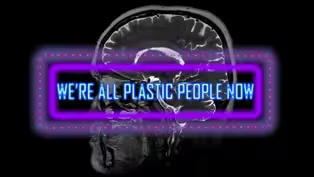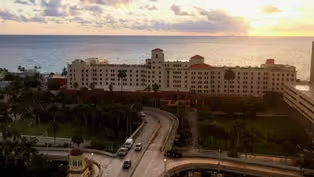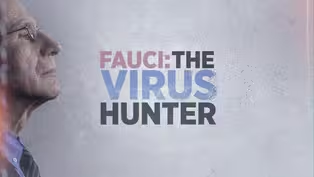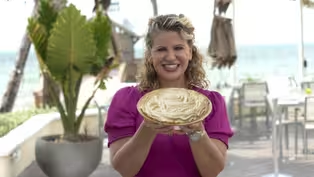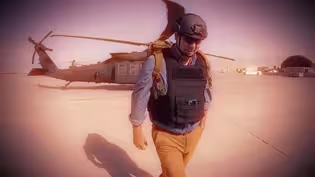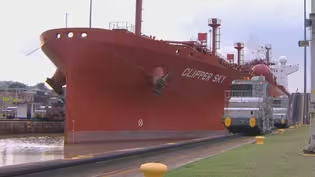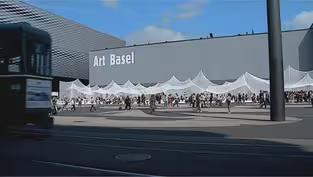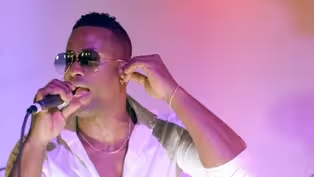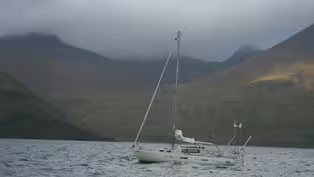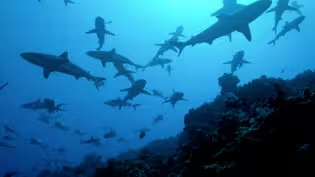South Florida PBS Presents
The Story of Florida State Parks: The Early Years (1864 - 1942)
Special | 25m 32sVideo has Closed Captions
Florida Women's clubs and FDR's Civilian Conservation Corps build the first state parks.
Florida's breathtaking state parks didn't just happen—they were envisioned, fought for, and built. In this first part of our 3-part documentary series, we uncover the dramatic and inspiring origins of Florida’s state park system. From the bloody Battle of Olustee to the visionary women who preserved Paradise Key, this story reveals how a movement for conservation was born in Florida.
Problems playing video? | Closed Captioning Feedback
Problems playing video? | Closed Captioning Feedback
South Florida PBS Presents is a local public television program presented by WPBT
This program is brought to you, in part, by Wachovia Wells Fargo Foundation and Florida Power & Light.
South Florida PBS Presents
The Story of Florida State Parks: The Early Years (1864 - 1942)
Special | 25m 32sVideo has Closed Captions
Florida's breathtaking state parks didn't just happen—they were envisioned, fought for, and built. In this first part of our 3-part documentary series, we uncover the dramatic and inspiring origins of Florida’s state park system. From the bloody Battle of Olustee to the visionary women who preserved Paradise Key, this story reveals how a movement for conservation was born in Florida.
Problems playing video? | Closed Captioning Feedback
How to Watch South Florida PBS Presents
South Florida PBS Presents is available to stream on pbs.org and the free PBS App, available on iPhone, Apple TV, Android TV, Android smartphones, Amazon Fire TV, Amazon Fire Tablet, Roku, Samsung Smart TV, and Vizio.
Providing Support for PBS.org
Learn Moreabout PBS online sponsorshipMore from This Collection
Documentaries showcasing the South Florida community produced by South Florida PBS.
Video has Closed Captions
A documentary portrait of architect Alfred Browning Parker. (56m 46s)
Video has Closed Captions
Investigation into the hidden story of plastic and its effects on human health. (56m 50s)
The Florida Keys: 200 Years of Paradise
Video has Closed Captions
Journey through the history of the Keys and meet the people who live there. (56m 46s)
Video has Closed Captions
The Historic Hollywood Beach Resort, also known as the "Grand Lady," has a famous and stor (26m 29s)
Video has Closed Captions
Explore Dr. Anthony Fauci's unique legacy in infectious diseases research. (56m 26s)
Video has Closed Captions
Michelle Bernstein tours the Florida Keys in search of local specialties, recipes and more (56m 46s)
Video has Closed Captions
The story of American men and women serving in our wars in the Middle East. (24m 46s)
Panama Canal: Prized Possession
Video has Closed Captions
Explore the history of the transfer of the Panama Canal from the United States to Panama. (57m 23s)
Video has Closed Captions
Basel, Switzerland plays host to the largest and most influential art fair in the world. (26m 58s)
Video has Closed Captions
Experience the explosion of the Latino influence on mainstream American music and culture. (57m 23s)
Red Dot on the Ocean: The Story of Matt Rutherford
Video has Closed Captions
Matt Rutherford risked it all in an attempt to sail alone around the Americas. (56m 50s)
Video has Closed Captions
Mysteries of the Coral Canyon tells the story of how sharks and coral reefs are connected. (55m 1s)
Providing Support for PBS.org
Learn Moreabout PBS online sponsorship[Applause] [Music] [Applause] It has been said that the story of Florida State Parks is the story of Florida.
A story that reaches back in time like the roots of an ancient oak tree.
It began as a quest to conserve the natural places for future generations and endured as the story of men and women who struggled to preserve what are and will forever be the heart and soul of Florida.
This is the story of Florida's state parks.
[Music] on February 20th, 1864.
Four.
More than 10,000 Union and Confederate troops clashed in a pine forest 20 m east of Lake City.
The federal forces had been dispatched from Jacksonville that cut off the Confederate supply line to its army in the north.
The Battle of Alusti ranked as one of the bloodiest battles fought in the Civil War and one of the fiercest fights that men had ever seen.
Federal forces suffered 40% casualties, double the number lost by the Confederates.
The battle ended as a significant Confederate victory.
[Music] Here at the Ousti battlefield, the seeds of a future state park system were sown.
Today, thousands of spectators and hundreds of reenactors gather annually for the Alusti battlefield reenactment.
I walk the line between the spectators and I tell them I'm protecting them and at the same time while they're waiting there because a lot of spectators show up like an hour early to get good seats.
So, I tell the stories, you know, I pick out the kids and I tell them a little bit about history.
If they're if they're carrying something like a toy weapon, I'll start talking about the weapon.
I'll start talking about what happened here.
Because if you're a true living historian, you can never shut up.
You've got to do that.
It's a wonderful experience knowing that someone's walking away with something they didn't have before.
In 1913, nearly five decades after the war, the OSI Battlefield Monument was dedicated at a ceremony attended by Civil War veterans from both sides.
It became the first historic site in Florida's future state park system.
The United Daughters of the Confederacy once raised funds to build the monument.
Today, they interpret its history while paying tribute to the fallen soldiers.
Rob Dugger is my sweetheart's name.
He's off to wars and gone.
He's fighting for his dear.
His heart is buckled on.
He's fighting for his true love.
His f does defy.
He is the darling of my heart.
My southern soldier boy.
During the early 1900s, women's clubs began to take charge of community beautifification projects and educating the public about Florida's natural life.
The Florida Federation of Women's Clubs was particularly interested in preserving a legendary area in South Florida known as Paradise K. Paradise Key had this unsurpassed collection of royal palms, perhaps a thousand or more royal palms.
And it wasn't until the late 19th century that the first white person actually saw Paradise Key.
Members of the Federation, including Mary Bar Monroe, an early pioneer in South Florida, became increasingly concerned about protecting the native royal palms at Paradise K. uh poachers were going out into the Everglades and they were uh uprooting uh all sorts of wildlife uh including royal palms and uh taking them back into the city and planting them along the roadways.
and Mary Bar Monroe and another uh club woman by the name of Edith Gford proposed in 1905 to the Florida Federation of Women's Club uh to create some sort of preserve uh whether it be a park, whether it be a monument, either a federal uh preserve or state preserve to protect these royal palms.
The other concern was not simply pro protecting these royal palms but also protecting the bird life in Florida.
Florida had suffered since the 1880s uh from the millinary industry.
Uh hundreds of thousands if not millions of Florida's birds, particularly waiting birds, were shot by uh plume hunters for the purpose of these these feathers being turned into hats for women.
The Florida Federation of Women's Clubs adopted a resolution to create a park at Paradise K, but took no action until May Man Jennings was elected club president in 1914.
Jennings was a native Fidian originally from Crystal River, but educated in St. Augustine.
She was the daughter of a prominent Florida politician, Austin man, a leader in the populist party.
At an early age, she developed a strong connection to the natural world.
She was a real go-getter.
Uh she had political connections through her father and then later through her husband, William S. Jennings, who became a governor of Florida at the turn of the century.
With supporting arguments by her husband, Jennings delivered a bill to the Senate and House of Representatives.
960 acres of state land were set aside to create the park along with an equal share of adjacent land donated by Mary Flaggler, a club member and the widow of Henry Flaggler.
The first area to be called a state park in Florida was created by legislative action June 5th, 1915.
Royal Palm State Park was dedicated one week before Thanksgiving in 1916 during the annual convention of the Florida Federation of Women's Clubs in Miami.
On the day of the dedication, uh 165 automobiles gathered at the Houseian Hotel in Miami.
Uh this palatial place studded by Royal Palms ironically.
Uh and and from the Houseian Hotel, uh these 165 cars formed a onem long motorcade uh that took them uh took hours to drive out to Royal Palm Park at Paradise Key.
Hundreds of people showed up for the dedication.
Speeches were made celebrating the new park while visitors experienced its natural wonders.
Royal Palm State Park was open for business.
Mayan Jennings had an image of what that park should look like, what the landscape should look like, and she consulted a number of naturalists about how she might relocate ve certain vegetation somewhere uh in one place or the other.
And they actually they literally raided other hammocks uh for uh for plants uh for for royal palms and brought them to to the the hammock at Paradise K and replanted them there.
There was one Florida naturalist who said, "No, this is offensive.
Uh this is an insult to nature.
You need to leave things as they are."
And that was Charles Tory Simpson.
Simpson described Paradise Key in the April 1916 issue of Tropic magazine.
As I gaze with awe and wrapped admiration on this work of the great master, I feel that it is perfect as beautiful as it is unique.
But he also laments, "No matter how beautiful any work of nature is, our people are possessed with the desire to improve it."
This is part of Mayan Jennings brilliance.
She had tried to convince the state legislature to create a state park system.
She said, "Look, we're running Royal Palm down here.
We're doing it by ourselves.
How about a little help from you guys?
And while you're at it, let's create some more parks for for the people of Florida and for our tours.
The Florida Federation of Women's Clubs continued funding Royal Palm State Park, but later signed the deed over to the US Department of the Interior for the creation of Everglades National Park.
So in 1925, May Jennings and her son Brian Jennings, who's now a state legislator himself, like his father was, they author a bill to create a Florida park service, and it's passed, but it's not funded.
So even though it passes in 1925, is dead on arrival, so nothing happens with it.
Two years later, 1927, she and Brian write another bill to create the Florida Forestry Service.
and she had always hoped that the Florida Forestry Service might eventually encompass a Florida Park Service as well.
She even writes some articles in local papers.
She campaigns, "We need a Florida Park Service.
We already have a law in the books.
Why don't we just fund it?
Nobody's interested."
By the late 1920s, the land boom had ended.
Hurricanes devastated the lower peninsula and the stock market crashed.
Florida was hit hard by the Great Depression.
In January 1933, Dave Schultz was inaugurated as Florida's 26th governor.
Meanwhile, President-elect Franklin Roosevelt waited for his own inauguration in March.
Franklin Roosevelt's on vacation.
He's fishing off the coast of Florida.
At one point, joins a parade in Miami, Florida.
He's with the mayor of Chicago.
few other dignitaries and a local lone gunman takes a shot at the newly elected president-elect Franklin Roosevelt.
Misses him, but he does shoot a couple spectators and the mayor of Chicago.
This happens in Florida.
Dave Schulz is the governor.
Rushes down to Miami.
Press, of course, is covering everything.
He accompanies the body, the Chicago mayor's body back to Chicago with Franklin Roosevelt.
And immediately this connection's made between Governor Dave Schultz and Franklin Roosevelt.
And it's good.
And from that point on, Dave Schultz makes sure that he constantly is connected with Franklin Roosevelt.
He becomes Florida's New Deal governor.
Harry Lee Baker, Florida's first state forester, approached the state planning board with a proposal to create a Florida park service using federal dollars and Roosevelt's newly created Civilian Conservation Corps to build it.
The exact same time, May Jennings approaches the Florida State Planning Board, which was funneling all of these federal funds into Florida.
And in February 1934, she gives a speech in front of them.
and again makes the argument that we need a Florida park service.
The law is already on the books.
She wrote it.
This is a time to do it.
And because of the New Deal and because of the CCC and because of the pressure on Governor Dave Schultz to do more, it is that one magical moment where finally the governor and the state legislature is willing to put up at least some money to create a Florida park service.
With Governor Schultz's signature on the legislative act, the Florida Park Service was established in 1935 under the Florida Board of Forestry.
For Mayan Jennings and the women's clubs, the long awaited goal had been achieved.
CH Schaefer was soon appointed as the first director of the Florida Park Service.
A few years before the creation of the Florida Park Service, Margaret Robling, wife of engineer John Robling, designer of the Brooklyn Bridge, was flying with her son over a native forest near Sebring, known locally as Hooker's hammock.
The sight of this woodland captured her imagination.
It's not quite the redwoods of California, but this is as close as you're going to get in Florida.
Huge 100 foot trees.
I mean, some of the biggest trees you'll see anywhere in Florida.
And this used to be much of Florida at one time, but by the 1929, this is one of the few left standing.
Supposedly, she turned to her son and said, "Somebody needs to save that hammock."
But we do know that soon after this plane ride, she buys the property.
And her, her husband, and her son go about developing it into a local park.
Margaret Robling died in 1930, nearly 5 years before her beloved park was completed.
John Robling continued funding his wife's dream and placed a stone monument dedicating the park to her memory.
The park was initially known as the Florida Botanical Gardens and Arboritum.
Later, a Civilian Conservation Corps camp was established to develop the area into Highlands Hammock State Park.
Although the US Army was in command of logistical operations like camp development, maintenance, food, clothing, and medical care, the National Park Service oversaw the actual park design and construction.
CCC uh workers uh initially had to be 18 to 25 to join.
Although we do see some some older workers, but most of them are 18 to 25.
Before you could go in, you had to prove to a local welfare agent that your family was in need, not just anybody could get in.
But once you got in, you did a couple weeks of conditioning with the US Army, usually at Fort Benning in Georgia if you were from Florida.
Then you were sent to whatever project you were going to work on.
You were paid $30 a month.
you kept $5 of it.
And if you remember, you're getting your housing, your food, your clothing, and your transportation all provided.
So that $5 is just for you.
Uh the other 25 goes home to your family.
A lot of CCC veterans will tell you that it saved their family.
That $25 a month.
That's the honest truth.
People really don't know today what hunger is.
Like back in the depression, one man and every four was out of work.
And I remember reading that one letter that the fellow wrote about the CCC about when he was having breakfast that he ate with a fork to pass a milk on down to the next kid, you know.
But we weren't quite that bad, but uh you never had to worry about cleaning your plate when you got to there was nothing left on it.
So the idea was we put these guys to work, we give them some money, and we make them feel good about the country again.
We feed them well.
And these guys ate unbelievably well.
They were only worked 40 hours a week, so it was hard work, but it was reasonably hard.
It it was bearable.
And again, I never say that to a CCC veteran.
But uh they had a pretty good time in the CCC.
I think we see that with the the reunions every year.
At the annual Civilian Conservation Corps reunion in Highlands Hammock State Park, the Florida Park Service keeps alive memories of a distant time.
My name is Gordon Pierce.
I'm from Fort Myers, Florida.
And I worked in the CC's here in Highlands Hammock in 1939 or 40 being a long time ago.
The first job I had was in the wheelbar gang.
We built all the trails with a wheelbars and at some time they were mile long and we had to push those wheelbars full of dirt clear down at the end and dump them where they make the trail.
also worked in the sawmill stacking lumber and plenty of grass, cleared land.
We was tough.
We were strong them days.
I wasn't too big, but I could carry my own weight.
I just think of the old times and how young I was.
And look at some of the trees that were still here.
The one big oak tree down the road is just about gone.
So, I guess we'll be gone at the same time.
I'm 86 years old.
And I always go by and say hello to that tree when I come to the park.
Give me a lot of shelter right under the shade.
Back years when I was working or you could load the wheelbars right here on underneath the shade, built a trail going down towards the camp.
Well, goodbye, old tree.
See you next year.
Within Florida's early state parks, there are structures still in use today that stand as lasting reminders of the ingenuity and creativity of the Civilian Conservation Corps.
Alan Altvater was stationed at Highland's Hammock from 1935 until 1942 and became its second and longest serving park superintendent.
Today, his grandson preserves historical records and artifacts from the early days.
You know, one of the things that my grandfather wrote on the history of Highlands Hammock, it's it's nearly impossible to separate uh the various entities, whether it's the tropical state parks association was formed or the botanical gardens and arboritum uh the Robings uh input into it and the CCC.
It's it's a puzzle with lots of pieces that intricately fit together.
In 1933, Mr. Ed Lambrite was editor of the Tampa Tribune and he was inspired to write this poem entitled The Oak replies and I'll read you portions of it.
Says, "I wandered in a silent wood to where an age-old oak tree stood and leaning on its sturdy breast and peering through its loftly crest, I make my fickle fancy say,"Friend, what is the time of day?"
Then spake this venerable tree, and who are you to question me?
I was a tree when Pont sailed, Hernando fell, Panfillo failed.
And what your name, your fame, your creed, a lifeless leaf, a wayside weed.
What your brief hour of fears and tears against my immortal years.
I will be here when you are dust, your plots mute, your treasures rust.
And God will smile on me and say, "Friend oak, what is the time of day?"
They're almost done by 1933.
They build a road going through this hammock so people can come in, see the big trees.
They build a few picnic tables.
They put some fencing in this, some signage in.
Then they hear talk of this Florida Park Service and they say, "Look, if you can create this, we'll donate this to the Florida Park Service."
They do have a few strings attached.
there's a local organization to make sure that they honor their wishes.
But that is why they're able to open up Highlands Hammock opens its doors, you know, after June 4th, 1935.
In 1935 and 36, the Florida Park Service added eight parks to the system, including the wild and scenic Maka River near Sarasota.
The land along its banks was once known as Meadow Sweet Pastures, a cattle ranch developed in 1910 by Chicago socialite turned rancher Bertha Palmer.
Her scientific ranching methods were at first scorned by the old cattleman, but later became widely accepted.
The donation of this unspoiled tract of land formed the foundation of today's Maka River State Park.
At Florida Caverns, the Civilian Conservation Corps developed one of the most unusual locations in Florida and met one of its toughest challenges.
Kelly Bant and Mark Ledllo lead the way.
Look at all these large columns.
Beautiful, aren't they?
We call this the enchanted forest.
Uhhuh.
Because the colu.. resemble trees or the tree trunks.
Is that what they called it on the original survey map?
The original text that I read referred to it as the rock forest.
I love this pipe organ formation here.
Yes.
It's beautiful, isn't it?
and the wedding cake formation, too.
They've been calling it that for about 70 years.
The cavern's value as a tourist destination was quickly realized [Music] in 1938.
Civilian Conservation Corps Company 1445 was sent to the park to build entrances and exits, excavate sediment from the passageways, and install electric lighting.
It was difficult work, but in 1942, park service director Lewis Scogginan announced that the Florida Caverns Tour Cave would finally open to the public.
[Music] The state and federal partnership had been a success with the muscle of the Civilian Conservation Corps.
The future looks strong for the Florida Park Service as it acquired some of the most scenic and historic sites in the state.
By the end of 1942, 12 state parks had been created, but national priorities shifted as the United States entered World War II.
Washington required the core to work only on defense programs and camps closed as young men rushed to join the military.
Company 1445 left Florida caverns in April of 1942 and the growth of Florida's state park system came to a halt.
The CCC era had passed.
Next time on the story of Florida State Parks, the Florida Park Service creates World War II training bases, turning a setback into a new beginning.
Heat.
Heat.
Heat.
Heat.
Support for PBS provided by:
South Florida PBS Presents is a local public television program presented by WPBT
This program is brought to you, in part, by Wachovia Wells Fargo Foundation and Florida Power & Light.
